Testaccio: An ode to a true Roman neighborhood

How do you say goodbye to a neighborhood that feels more home than your hometown? How do you thank people who embraced you for four years without speaking your language? How do you explain sorrow over moving, when you’re only moving two kilometers?
Rome does that to you. Testaccio does that to you. It’s a neighborhood few tourists know and not many Romans know well, as I do. But unlike the Eternal City, my home isn’t for eternity. This weekend, after the four best years of my life, I’m moving. I’m going across the Tiber River and up the hill to Monteverde, an upscale, green neighborhood peppered with huge trees and modern eateries and home to the biggest park in Rome.
I’m excited, anxious and curious. But I’m also filled with sorrow and melancholy. As I’m writing this on my 35-square-meter terrace, with the sun peeking over my penthouse roof, I can see the opposite bank of the Tiber below me. Yet with this move looming, that river seems as wide as the Atlantic Ocean.
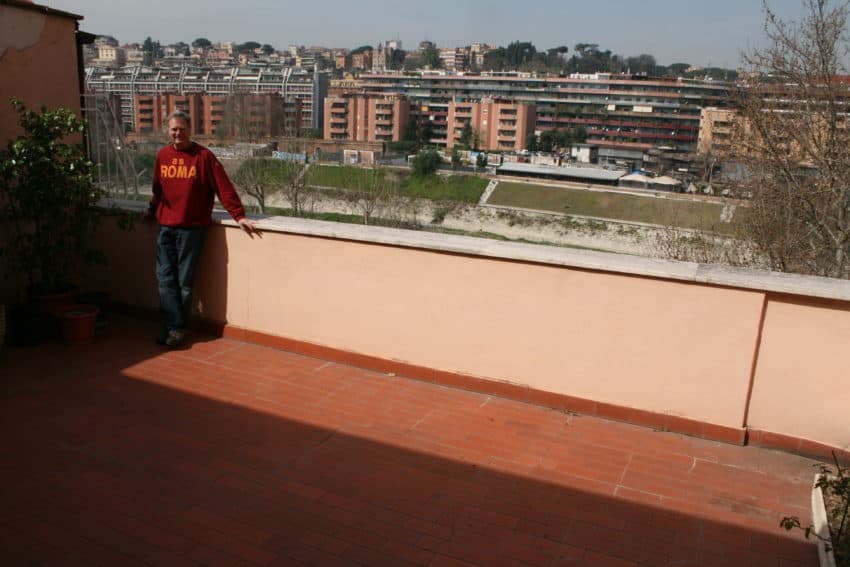
I don’t want to move. From the minute I set foot in this palace of an apartment, I knew I’d found a home, hopefully permanent. I covered the walls with artwork and photos. I filled my closet with red and yellow AS Roma gear. I nurtured my landlady’s plants and lined the terrace with flowers of purple, white, yellow and red. On my terrace I entertained, ate, drank, wrote and bathed in the sun, like an old Roman senator easing into retirement.
So why leave? It’s for a boring reason: security. My landlady, for reasons she never fully explains, refuses to give me more than six-month contracts. Every six months I had to sweat out a rent increase or even a 30-day notice. Negotiations consisted of “sign or leave” the week a contract expired. She would never discuss it leading up to the next contract. However, due to weird Italian tax laws way beyond my comprehension, she only raised my rent once. The 1,000 euros I pay a month remain well under market value. I always signed.
However, when you’re retired in Rome, little stress becomes big stress. If I eliminate that stress every six months, I’ll have nirvana: a stress-free life. Who wouldn’t want that? So I found another penthouse apartment that’s bigger (55 square meters vs. 45) with a bigger kitchen, living room, closet, bedroom and even bed. It doesn’t have the same romantic terrace but it has a wide balcony that wraps around the entire apartment.
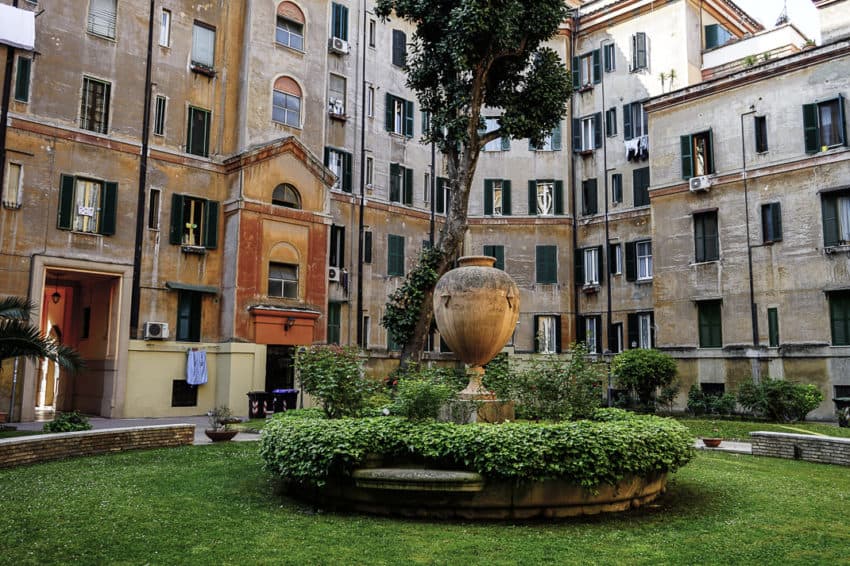
My girlfriend, Marina, is ecstatic. She’s a third-generation Roman who has always called Monteverde “chic.” She’s also ecstatic she has a stress-free boyfriend. I signed a four-year contract which, under Italian law, allows me to get a residency card, a family doctor and utilities in my name and, thus, cheaper bills. It’s for the same 1,000 euros with a smaller condo fee (68 vs. 100). It has an elevator. No longer will I have to hike up 90 steps if I forget a notepad. A bigger, cheaper gym is only three blocks away. An old-fashioned Roman public market is only two tram stops away. Doria Pamphilj, Rome’s 455-acre park, is just beyond that. I’m excited, too, in a way. I’ll live in Rome the rest of my life. After four years, it’s time to explore another neighborhood.
Now it’s time to say a heartfelt goodbye to my old one.
Rome’s neighborhoods are very distinct, as different in appearance and vibe as different countries. Centro Storico is where remnants of Ancient Rome are everywhere you look. Nearby Monti, anchored by the Colosseum, is hip and maybe the most vibrant in the city. L’EUR is where Mussolini’s dream of a fascist neighborhood fell short, leaving it to become a relatively modern, comfortable zone with wide boulevards, big buildings, a man-made canal and terraced lawns.

Testaccio has changed through the years, too. Once so working class it was referred to as “the real Rome,” it has gentrified some. Older couples started selling their apartments to the young professionals. Soon it became one of the hippest places in the city yet still keeps its down-home Roman image. Located a little more than a mile south of Centro Storico — In about 15 minutes I can walk to Circus Maximus where they held the chariot races — Testaccio remains a true Roman neighborhood. The only tourists it attracts come for AirBnBs and tours of our famous public market, Mercato Testaccio. It has no hotels, no pubs, hardly even any postcards. It’s where old people sit in tree-filled Piazza Santa Maria Liberatrice and speak the old Romanesco dialect.
It’s where I don’t understand a damn thing.
It doesn’t matter. It’s here where I perfected what I call my “piazza mentality.” When down, mad, frustrated, go to a piazza. It’s what separates Rome from the rest of the world’s great cities. You don’t hear traffic. You hear birds. You don’t eat dust. You eat gelato. I solved most of the world’s problems, including some of my own, sitting in the shade in that piazza.
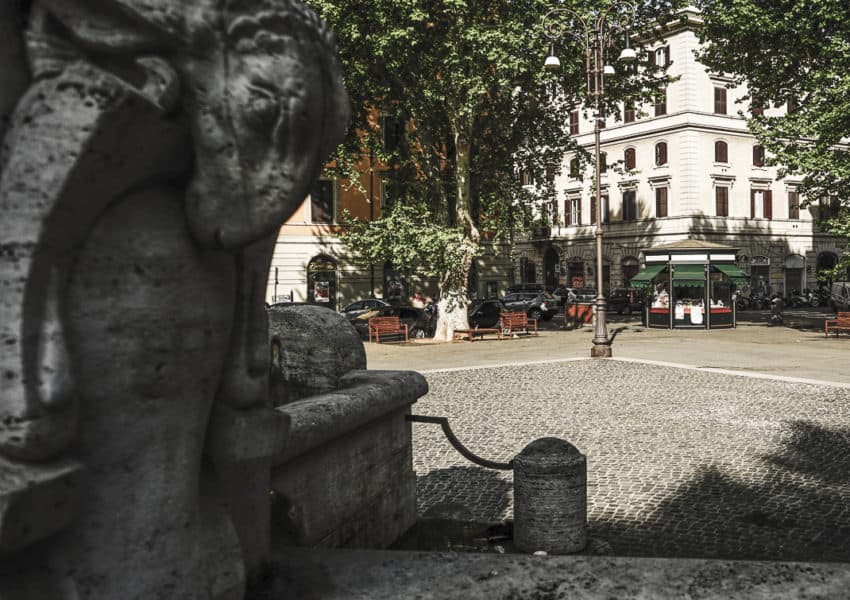
Testaccio has two great piazzas. Santa Maria Liberatrice, across the street from the church of the same name, is my anchor. It’s where I buy my newspapers at the edicola and where I eat my breakfast staple, cappuccino bencaldo (extra hot) and chocolate cornetto, at the nearby cafe, Linari, home to the fastest service in Rome. Two blocks away, historic Piazza Testaccio housed Mercato Testaccio for 100 years before it moved south a few blocks five years ago. Today the piazza is a flat cobblestone square with the Fontana delle Anfore in the center. Built in 1927 by Pietro Lombardi, it moved down the street to Piazza dell’Emporio in 1935 and returned to Piazza Testaccio three years ago. On any given weekend afternoon, you dodge soccer balls kicked by children and their fathers, still showing skills 40-50 years after they hung up their cleats. The wives and mothers sit on the wood benches ringing the piazza, gossiping and eating paninos.
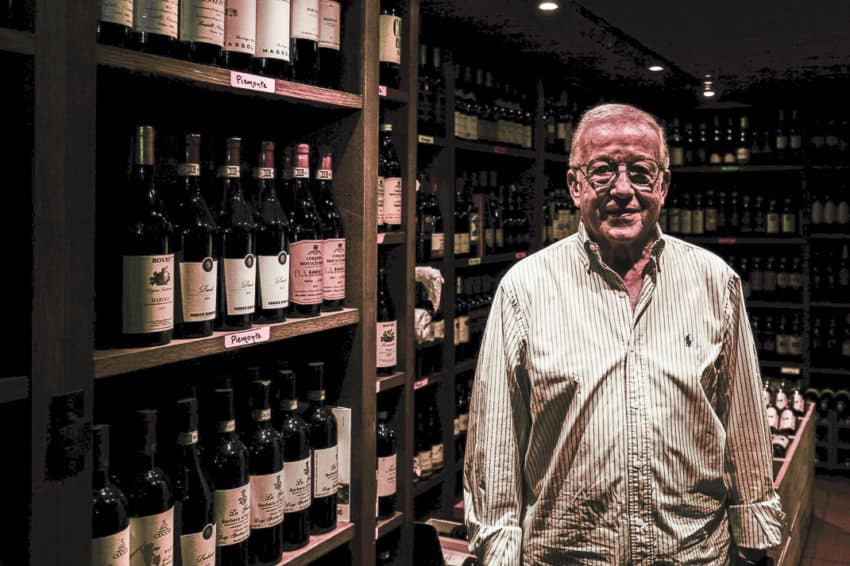
On one side of the piazza is my local watering hole. L’Oasi della Birra features 1,500 different wines and 500 different beers from around the world. It also has one of the best aperitivos in Rome. Ten euros gets you a buffet of pastas, vegetables, quiches, rice dishes and a variety of cold cuts, topped with some of their designer chocolates they sell on the side. Their covered patio seating with picnic tables is where I held many scambios (language exchanges), cardinal reunions (fellow Yank expats John Samuels and Jeff Larsen and I played cardinals in HBO’s “The Young Pope”) or just plain wanted a buzz (its delicious Centaurus on tap is 12 percent alcohol).
The top destination in Testaccio, however, became my daily ritual. Mercato Testaccio marks the pinnacle of La Dolce Vita’s food pyramid. The white-walled, open-air market is filled with the best fresh foods Italy has to offer. Those Sunday farmers markets in America where you pay $2.50 for an organic tomato? Those are sold every day in my market at a fraction of that cost. Walk around and suddenly the most hardened bachelor gets in the mood to cook. Who wouldn’t when you see prosciutto with nary a trace of fat, tomatoes so sweet you eat them like apples, bricks of parmesan with major bite, lean sausage, clementines and oranges perfect for morning juice, fresh loaves of multi-grained bread, tuna steaks caught that morning in the nearby Tyrrhenian Sea, fresh pasta sold in a dozen different shapes, fat green and purple grapes, bufala mozzarella shipped up from Campania, cheeses from all regions of Italy.
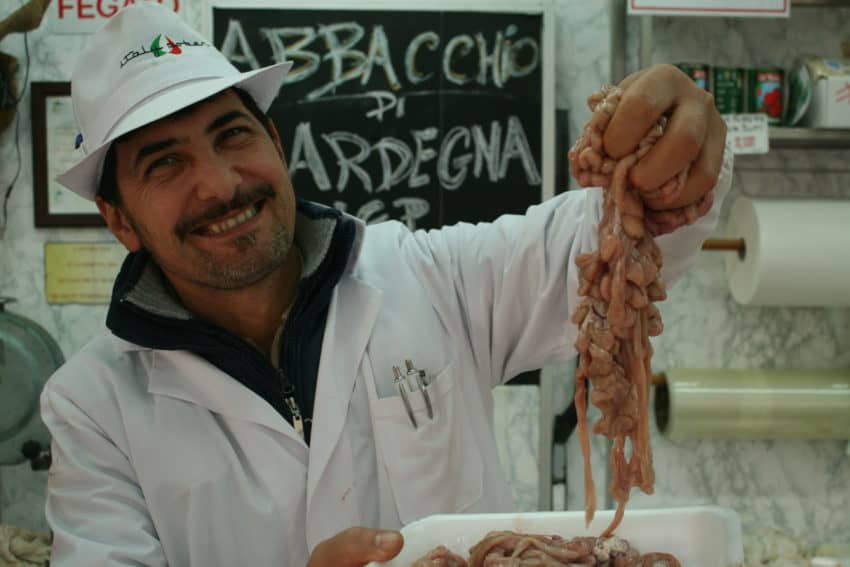
Shopping in Mercato Testaccio isn’t just a necessity to a healthier life. It’s a social experience. Over four years I’ve gotten to know the merchants I frequent. They’re like neighbors. I shopped at the same supermarket in Denver for 23 years. I never knew the name of a single clerk. They never asked me mine. But when I make my rounds after the gym I always stop by to see Federico, the butcher and Lazio fan who always reminds me of every Roma loss — with a smile. There is Alessandro the pasta man, another laziale who puts our differences away to suggest the best types of pasta for certain dishes. Then I buy fresh fruits and vegetables from Paola and her sister who wake in the countryside at about 4 a.m. to drive into Rome with their produce.

I got to know Antonella, the cheese lady and frequently ask about her ailing husband I met at the hospital and their new grandchild. Then there is the fishmonger, covered in blood and carrying a knife the size of a machete, greeting me every Tuesday and Friday (the days the fish are caught) with “Centottanta e quindici (180 degrees for 15 minutes)” because I can never remember how long to bake tuna. I always go to the same places. Going to another place for vegetables feels like sleeping with another woman.
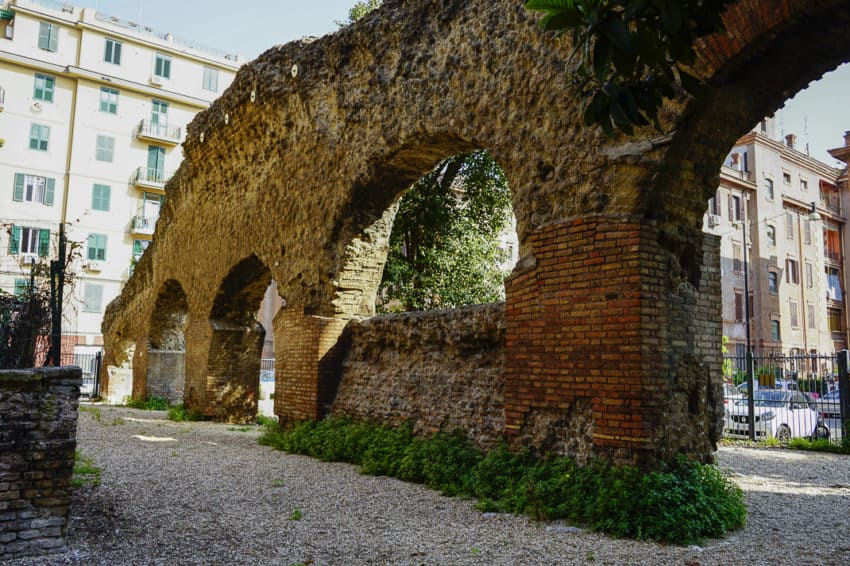
Testaccio’s working-class history goes back to Ancient Rome where it served as a warehouse for olive oil, grain and other goods shipped up the Tiber from the Tyrrhenian. Around the corner from my home stands the remains of Porticus Aemilia. the warehouse built in 174 BC. The shell of the structure still covers nearly the entire block and was one of the key storing facilities for Ancient Rome. Locals tell me Julius Caesar occasionally strolled my street checking supplies.
However, the ancient Romans had a dilemma. What do they do with all the terracotta pots carrying the olive oil? The demand for olive oil 2,000 years ago was so great, Rome had to import some from Libya and Tunisia. They couldn’t recycle the pots so they dumped the fragments in a pit where what is now seven blocks from the Tiber. They covered them with lime to kill the smell of the rancid olive oil. Finding it a convenient dumping ground, the Romans continued the practice until 250 A.D. when new type of pots were made.

To this day the pile remains. The estimated 53 million pieces stand 115 feet high. The fragments were known by the Latin name testae, and the neighborhood became known as Testaccio, meaning “bad fragments.” The pile, called Monte Testaccio, was abandoned after the fall of Rome but during the Middle Ages was used as a communal site for jousting exhibitions and feasts. In the 20th century, some savvy locals discovered the spaces between the terracotta fragments provided a breeze. They built houses and wine cellars into the side of the mountain. Today, Via di Monte Testaccio rings the mountain and is home to the most raucous nightclubs in Rome, none of which, I’m proud to say, have I ever entered.
To get to Mercato Testaccio from my gym, I must pass the remains of what was the largest slaughterhouse in Europe during the 1800s. I pass huge warehouses that housed animals until they were butchered and hung on hooks that still loom overhead where I walk. The poor workers were often paid in offal, all the awful parts no sane person would ever eat. Their industrious wives, however, made dishes, some borrowed from the even poorer Jewish Ghetto, that have remained staples in restaurants around Testaccio. There is trippa alla romana, soup made from the lining of a cow’s stomach; payata, the intestines of milk-fed calves; coda alla vaccinara, oxtail stew; and baccala’, fried cod.
Sometimes I think Roman cuisine is all based on a dare.
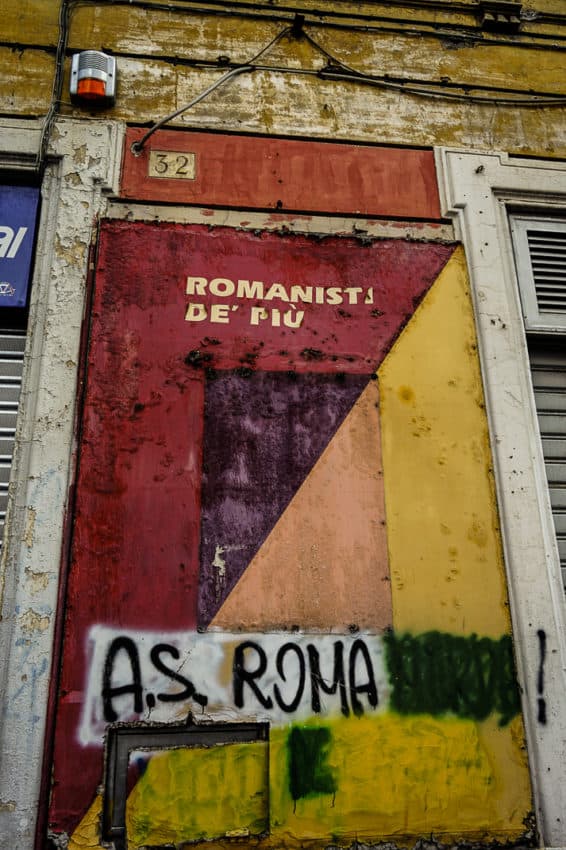
While those dishes remain, the slaughterhouse closed after World War II when locals started complaining about the smell. Today the MACROS houses a music school, the architecture department of Roma Tre University and art exhibits. Sometimes you’ll see a demonstration for animal rights. Yes, some things in Testaccio have changed.
During the early 20th century, Testaccio was a slum, a dump, a place of criminals and thieves and violence. However, Benito Mussolini, in one of the many underrated things he did for Rome, ordered a renovation of the neighborhood. I hear my building was one of those reclamation projects.
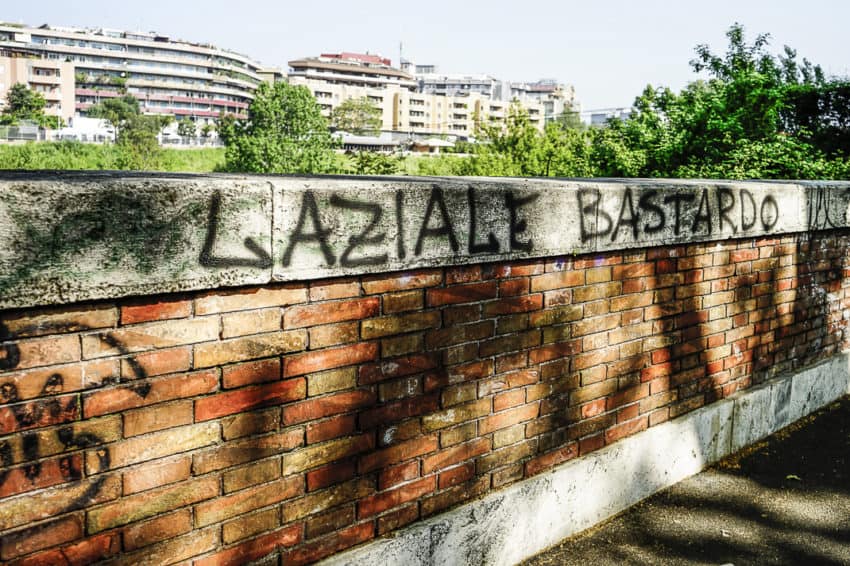
It was also about that time when my beloved A.S. Roma was born. In 1927, in an unimposing building three blocks from me, the club was signed into existence. Until a few years ago it housed the Roma Club Testaccio, a place old-timers — and one expat American journalist — could sit and watch Roma games on a big screen. Today, the club has moved near the market and the old headquarters is now a sports betting parlor. From 1927 until 1940, Roma played in Campo Testaccio, across the street from Monte Testaccio. Today, it is a weed-filled vacant lot with some lasting remains of the old grandstand. It’s too historic for the city or local romanisti to change a thing.
In some ways I’m moving out of my comfort zone. Marina warns me that Monteverde was built by the fascists and still is home to many evil laziale. However, the local stadium is home to ASD Trastevere, the Serie D team I also support. I’m sure I’ll get to know the coffee jockeys and pizzeria owner. I’ll have grand aperitivos on my balcony overlooking the forest of trees spread through the neighborhood. I’ll be fine. I’m retired in Rome. How can I not be happy?
But part of me will always miss waking up to see the dirty Tiber flowing below and sitting outside my sun-splashed Linari reading about Roma’s triumphs and failures. I’m hoping the prosciutto in Monteverde’s public market is just as lean, its tomatoes just as sweet, its parmesan just as biting.
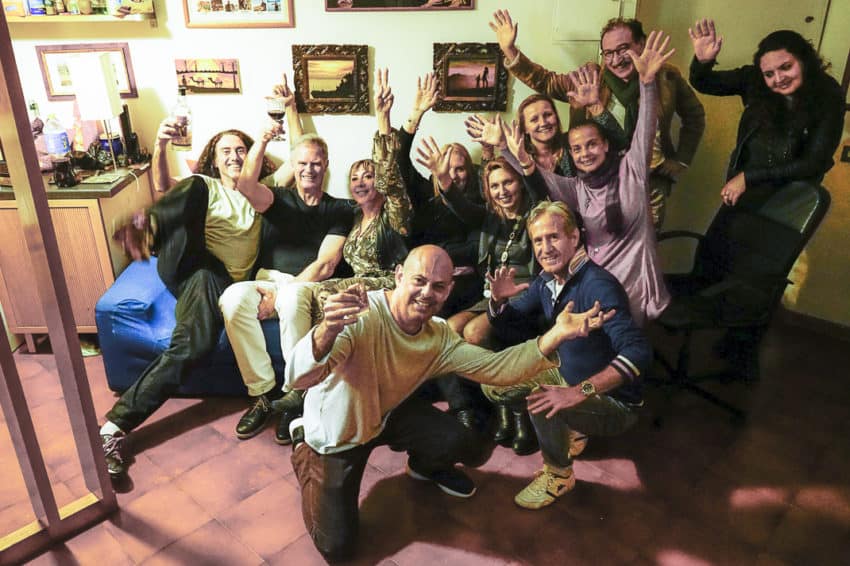
More than anything, I hope I find a neighborhood that embraces me as much as Testaccio did. A zone that fed Ancient Rome fed me for four years. As I fill my rented van with my last backpack of belongings, I’ll look back at the old brick building one last time.
“Arrivederci, Testaccio. Grazie mille. Non cambiare mai. Ma mi hai cambiato per sempre. (Goodbye, Testaccio. Thanks so much. Don’t ever change. But you changed me forever.)


April 25, 2018 @ 11:01 am
Beautiful memories, John. Now you and Marina will create new ones in Monteverde. They will love you. You are an engaging guy with a big heart. Happy new home to you!
April 25, 2018 @ 11:38 pm
I hope so, Virginia. This is not only emotional, it’s a royal pain in the ass.
April 25, 2018 @ 11:01 am
Beautiful memories, John. Now you and Marina will create new ones in Monteverde. They will love you. You are an engaging guy with a big heart. Happy new home to you!
April 25, 2018 @ 11:35 am
ti auguro tante belle cose. change is good 🙂 NML
April 27, 2018 @ 5:23 pm
I enjoyed reading your blog, which oddly just popped up! I recently found out my Dad lived there as a child for a few years, your insight into the neighbour is lovely as Ive never been there. best wishes for your new place!
May 4, 2018 @ 8:46 pm
Buon trasloco! Cristina